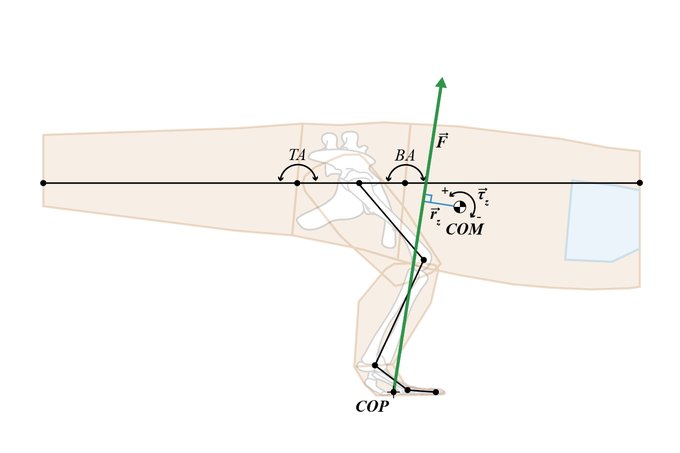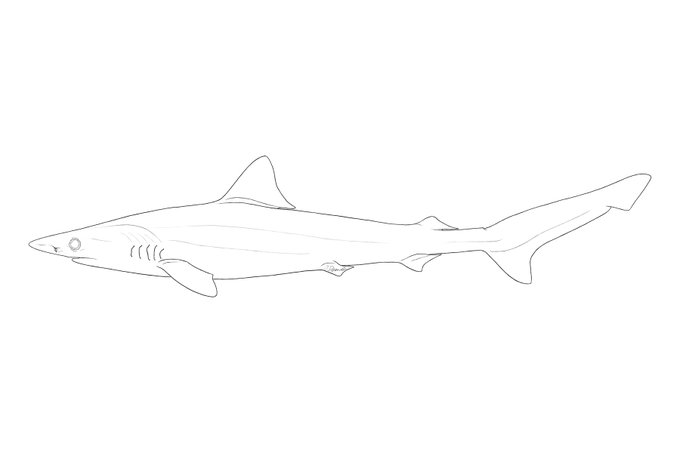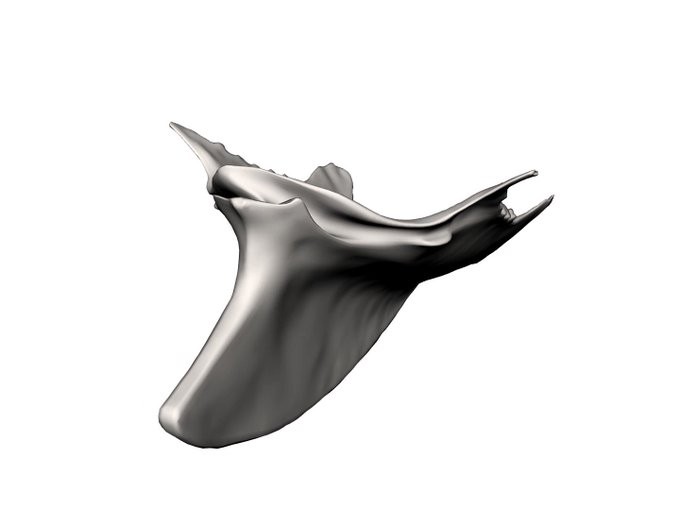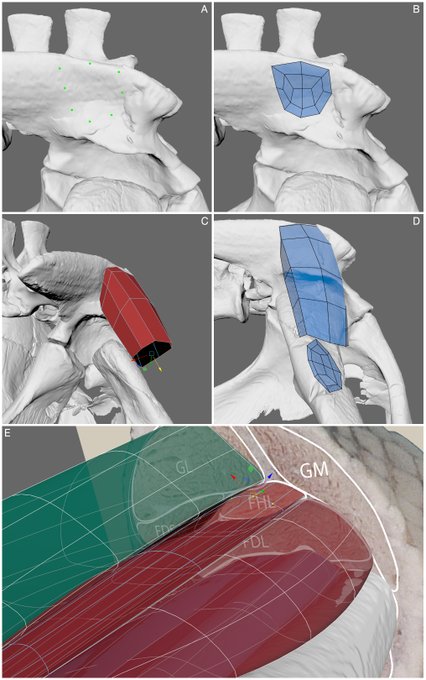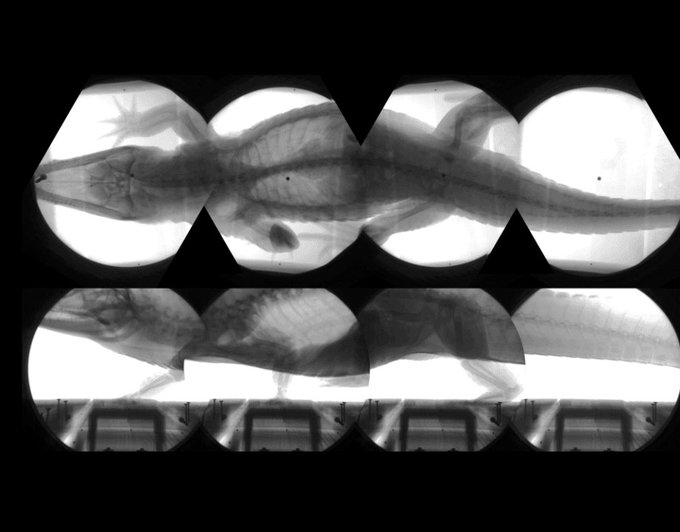What do the results look like for Euparkeria? Blue=nose down, red=nose up. To be bipedal Euparkeria needed to be in the red area. All extant lizards are deeply blue and the results are robust. Euparkeria couldn't be bipedal if it moved similar to any bipedal lizard today! 10/15
So does this mean it was potentially bipedal? To get more nuanced insights we looked at the moments around the COM. Bipedal lizards run bipedally due to peak GRFs in early stance phase, pushing the GRF vector in front of the COM, and thus pushing the nose up. 9/15
We identified muscle attachments on the pelvis and hindlimbs and built the musculature in 3D! Based on those 3D muscles and muscle architectural data of crocodylians and lizards we estimated muscle parameters for our musculoskeletal simulations. 5/15
@MetTiinA @Sketchy_raptor This might be a bit further away than what you are looking for (i.e., Crocodile (L) & Euparkeria (R) ) but the muscles are all labelled and generally the same in all archosaurs. This is from our recent paper in 3d muscle modelling: https://t.co/p1cmshBctl
This afternoon I finished the illustration of another shark! 🦈 This time it is Sphyrna lewini, the Scalloped hammerhead shark. #SciArt #SundayFishSketch #WildLifeArt
Spent this afternoon drawing and painting this cute little shark 🦈! Rhizoprionodon longurio, the Pacific sharpnose shark. #SciArt #WildLifeArt
Ichthyornis has a peculiar sternum with highly crossed coracoid sulci. Skeletal asymmetry, while uncommon in vertebrates, it is challenging for retrodeformation. However, using our new workflow we were able to reconstruct the complete sternum including the asymmetrical parts 10/n
This allowed us to build the full hindlimb musculature of Euparkeria capensis. A first for a Triassic fossils! All limb slices of the alligator can be found in the Supplementary Information here: https://t.co/NI1zU9Q9N3
7/n
Using these cross-sections (in accordance with the extant phylogenetic bracket) and getting information on attachment sites from the bones themselves, we can recreate simplified volumetric muscles from origin to insertion in @AdskMaya using polygonal modelling techniques. 6/n
Hot off the press! New paper w/ Michelle Zwafing, @PalaeoStephan and @JohnNyakatura about the locomotion of #Orobates. Modelling muscle strain using MDA and evaluated it with Caiman data, including this idealized #XROMM walkcycle. The paper is #OpenAccess: https://t.co/8v8prJ3QUd






